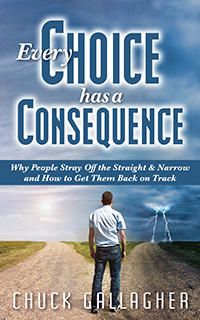Let me start with the end result of a lawsuit against Johnson & Johnson: the company has been ordered to pay Eva Echeverria, 63, of East Los Angeles $417 million in damages. Ms. Echeverria successfully won her case after it was shown that she may have developed ovarian cancer after using the company’s baby powder on her perineum area for 40 or more years. What is the ethical price of science?
 Ms. Echeverria is one of thousands of women who is suing the giant company. Other successful lawsuits have been brought and unfortunately one of the women who have sued passed away from ovarian cancer before the verdict was awarded. Indeed, Ms. Echeverria is extremely ill with cancer and she brought the lawsuit forward in order to help other women and to create an awareness for the dangers.
Ms. Echeverria is one of thousands of women who is suing the giant company. Other successful lawsuits have been brought and unfortunately one of the women who have sued passed away from ovarian cancer before the verdict was awarded. Indeed, Ms. Echeverria is extremely ill with cancer and she brought the lawsuit forward in order to help other women and to create an awareness for the dangers.
While some of the cases have been dismissed, there is an ethically disturbing question that remains unanswered: what did the company know, or not know as to the safety of their product?
Discovery in Tumors
It was in 1971 that researchers in the United Kingdom first discovered talc particles embedded in ovarian and cervical tumors. Many women, have used talc for its drying, freshening and anti-chafing qualities.
Ms. Echeverria had no idea that the talc might have been responsible for her ovarian cancer which was diagnosed in 2007. She immediately stopped using the product after hearing about another lawsuit in the news. It should be added that no warning appears on the Johnson’s Baby Powder container. The company of course, is vigorously defending the product even though some studies have linked talc to ovarian cancer. It should come as no surprise that the company is appealing the verdict.
In April 2017, the National Cancer Institute issued a report on talc and ovarian cancer. The study leads with the following statement:
“The weight of evidence does not support an association between perineal talc exposure and an increased risk of ovarian cancer.”
While I am hardly a scientist or medical doctor, I went to the National Cancer Institute’s website after reading about a certain amount of ambivalence on the part of the medical community. Under the section that reads: “Ovarian, Fallopian Tube and Primary Peritoneal Cancer Prevention,” I noted the following:
“It is not clear whether the following affect the risk of ovarian, fallopian tube, and primary peritoneal cancer: Diet, Alcohol, Aspirin and non-steroidal anti-inflammatory drugs, Talc and Infertility treatment.”
There have been studies where a suspicion exists that there may be a link, but they are inconclusive. In 2006, an organization called the International Agency for Research on Cancer in felt that talc might be a human carcinogen when used by women in the perineal area.
Clinging to Science
For its part, Johnson & Johnson is maintaining that its baby powder containing talc is absolutely safe when used as directed. They are neither putting a safety warning on the package nor are they recommending that women switch to a corn powder based product they market that has no complaints against it.
It is understandable. To put a warning on the package or to suggest women switch to another product is an admission that something might be wrong.
Part of the problem is the talc’s composition itself. Talc can contain asbestos and magnesium. When talc is being mined scrupulous care must be taken to insure its purity. Nevertheless, some scientists feel that the talc particles themselves may, in certain cases, travel up the fallopian tubes and inflame tissue which could eventually lead to cancer.
This is all theoretical stuff, of course. As long as Johnson & Johnson clings to its science not very much will change. I am reminded, perhaps unfairly when cigarette companies held on to their science, or when aspartame was added to diet drinks.
If Johnson & Johnson has been aware of these uncertainties since 1971, why continue to market the product as is, or at least why not begin a reformulation? Pediatricians have long recommended that baby powder (!) not be used around babies’ due to possible pneumonia and respiratory problems. As more awareness of this issue unfolds, numerous publications are advising parents to not use this product around girls.
Is this a case of stubbornness overriding common sense? It will be interesting to see if this once, innocuous baby product could bring a mighty company into an ethical firestorm. What is the ethical price of science?
-YOUR COMMENTS ARE WELCOME!


